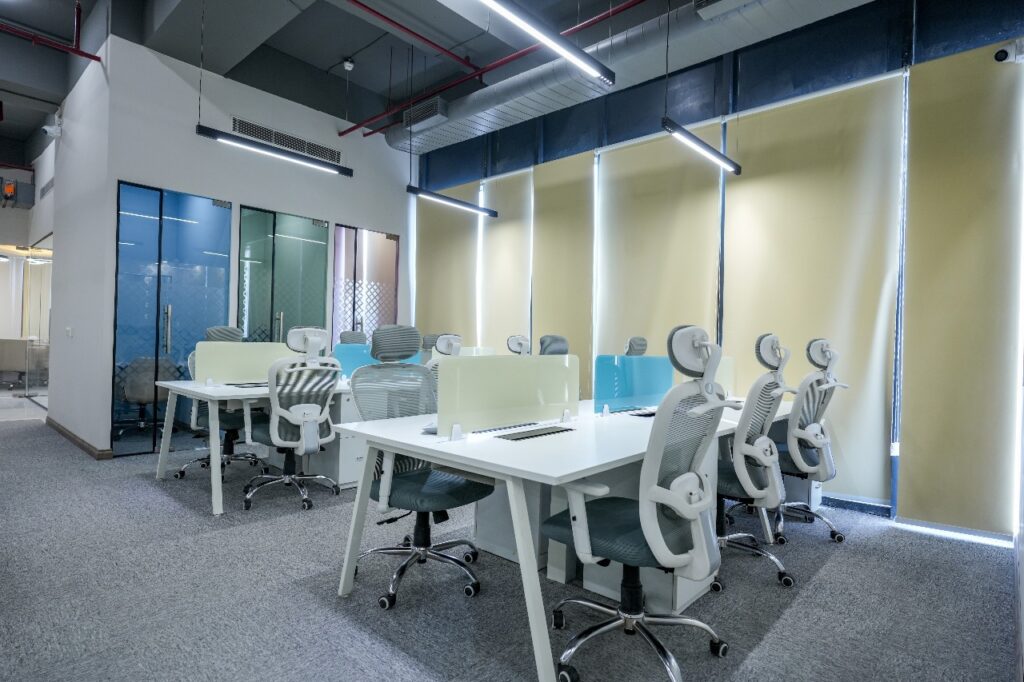
A startup’s office is more than just four walls—it’s a powerful extension of its brand, culture, and workflow. In the fast-paced world of entrepreneurship, your office should motivate, adapt, and inspire. Below, we dive into 10 in-depth, highly detailed office design ideasthat will help startups stand out, scale faster, and supercharge productivity.
1. Open Floor Plans with Strategic Zoning
An open floor plan promotes transparency, fluid communication, and collaboration—critical elements in a startup culture where teamwork is vital. However, simply removing walls isn’t enough. Effective zoning within an open layout balances collaboration with focused work.
Create clearly defined activity-based zones using furniture, area rugs, plants, and lighting. For example, a central collaboration zone can feature modular sofas, writable surfaces, and mobile whiteboards for quick ideation. Around the perimeter, set up quiet corners with desks and dividers for deep work. Transition spaces—like informal huddle spots or “collision zones”—encourage spontaneous discussions.
Moreover, using zoning principles allows for better control over noise, lighting, and privacy. Avoid clutter by implementing cable management and under-desk storage. Strategically locate meeting rooms and lounge areas away from focus zones to minimize disruption.
2. Biophilic Design: Bringing Nature Indoors
Biophilic design is more than adding plants—it’s about creating a strong sensory connection to nature, which can reduce stress, enhance focus, and boost overall well-being. In startups where high performance is expected daily, biophilic design serves as a mental and emotional anchor.
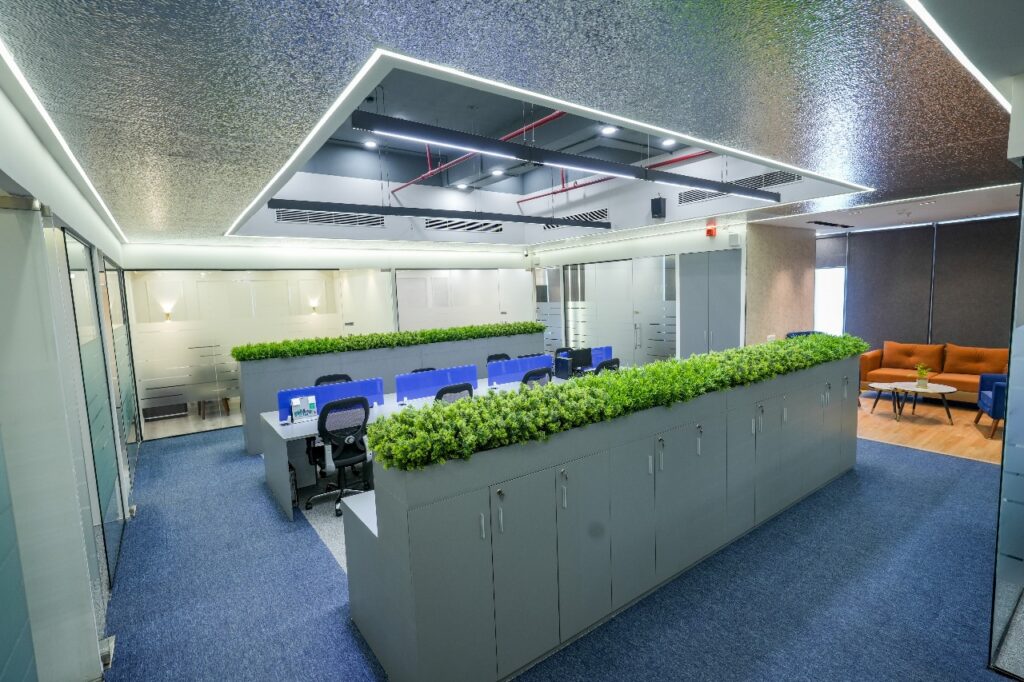
Start with indoor greenery—use a combination of potted plants, hanging planters, and vertical gardens. Choose low-maintenance species like snake plants, pothos, or ZZ plants. Enhance natural light by using translucent blinds or removing visual obstructions near windows. If outdoor views aren’t possible, incorporate nature-inspired artwork, wallpapers, and digital screens displaying natural scenes.
For materials, prioritize organic textures such as unfinished wood, bamboo, jute, and stone surfaces. The use of neutral earth tones and botanical hues helps ground the space emotionally. Complement this with soothing natural sounds (e.g., water fountains or ambient sound machines) and fresh airflow to create an immersive biophilic experience.
3. Smart Office Technology Integration
Startups that integrate smart technology into their office design streamline operations and enhance both productivity and employee satisfaction. From energy savings to workflow automation, tech-forward offices are built to scale.
Smart lighting systems adjust brightness and color temperature based on the time of day or occupancy, helping reduce eye strain and save energy. Climate control systems—like Nest or Ecobee—automatically optimize air quality and temperature, enhancing comfort across seasons.
Install wireless charging stations in desks and communal tables to eliminate cable clutter. Use smartboards, tablets, and video conferencing setups for hybrid meetings and real-time collaborations. IoT-based occupancy sensors help monitor desk usage and optimize space planning.
Additionally, implement workspace booking software so employees can reserve hot desks, meeting rooms, or focus booths on-demand. Smart access control and security systems can also provide flexibility without sacrificing safety.
4. Creative Collaboration Spaces
Innovation happens when teams have the freedom to collaborate in diverse, informal ways. While boardrooms have their place, startups benefit immensely from casual, vibrant collaborative space designed to spark creativity.
Dedicate zones that are visually and functionally different from the main workspace. Include standing tables, writable glass walls, digital whiteboards, and even AR/VR stations for product prototyping. Keep seating movable—beanbags, ottomans, or stackable chairs—to allow fast reconfiguration.
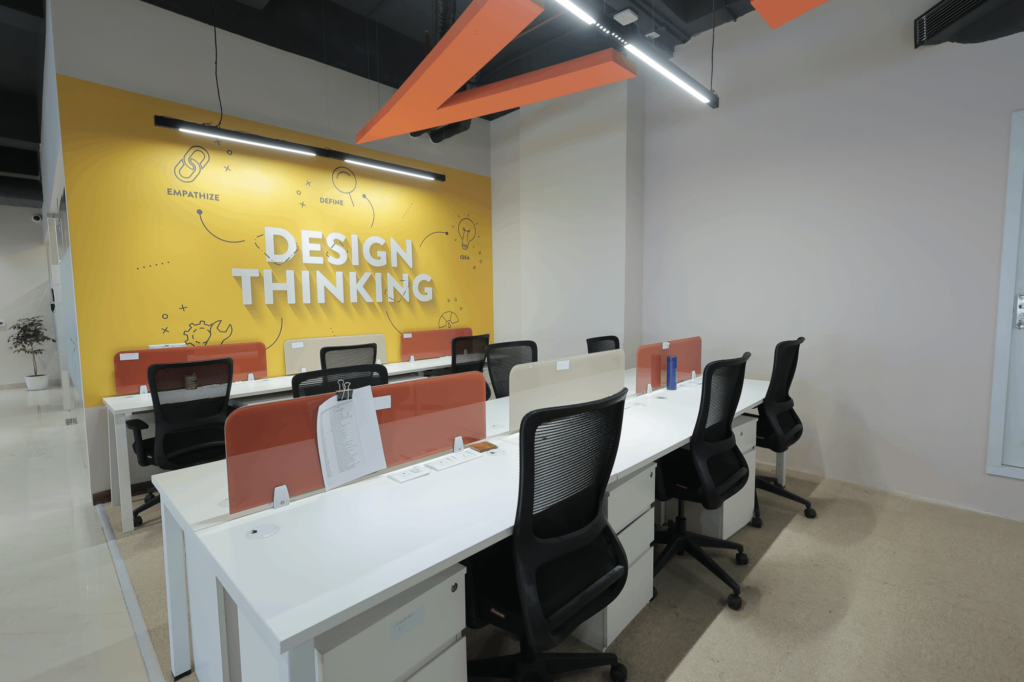
Design the environment with stimulating colors like yellow, teal, or red to energize the brain. Install inspirational quotes or artwork that reflect the startup’s mission. Encourage impromptu collaboration by placing these spaces along key pathways or near refreshment stations.
Support hybrid work models by equipping these zones with large screens, high-quality microphones, and fast Wi-Fi, enabling remote and in-office teams to collaborate seamlessly.
5. Focus Pods and Acoustic Solutions
In the startup hustle, deep concentration is often compromised due to open layouts and constant activity. That’s where focus pods and acoustic solutions come in, allowing individuals to enter a distraction-free zone for concentrated tasks.
Install phone booth-style pods with soundproofing, ergonomic chairs, and small desks for calls or individual work. Create library-like zones where silence is encouraged, and lighting is soft and warm. Noise-absorbing materials, such as felt paneling, acoustic ceiling baffles, and carpet tiles, help reduce reverberation.
Designate “no meeting” or “silent hours” to give employees predictable quiet periods. Offer visual signals like “do not disturb” desk lights or signs. For team members sensitive to noise, provide noise-canceling headphones as standard equipment.
This layered approach allows for dynamic zoning—people can switch between high-energy and high-focus spaces as needed, maintaining both creativity and productivity.
6. Brand-Integrated Interior Themes
Your office is a three-dimensional extension of your brand. When clients or new hires walk in, they should instantly feel the ethos of your company. A thoughtfully designed, brand-aligned workspace builds loyalty, reinforces purpose, and improves team identity.
Use brand colors in furniture, accent walls, and flooring to create consistency. Integrate core values, taglines, or the company mission into the design—painted murals, wall decals, or laser-cut signage work great for this.

Celebrate your story with a “journey wall” showcasing product milestones, team achievements, and early pitch decks. You can also name conference rooms after major wins, cities you operate in, or company heroes.
Consider digital displays showing live social feeds, customer testimonials, or real-time data dashboards to keep employees connected to impact and performance. Every corner should remind your team of why they do what they do.
7. Modular and Scalable Furniture
Growth is the DNA of every startup, so your office needs to be adaptable. Fixed office furniture leads to bottlenecks and costly renovations. Instead, go modular—design for flexibility.
Choose adjustable desks, nesting tables, rolling chairs, and foldable partitions that can be reconfigured daily. Mobile storage units can double as room dividers. Seating should be light and stackable, allowing for quick transformation of team areas into event spaces or breakout zones.
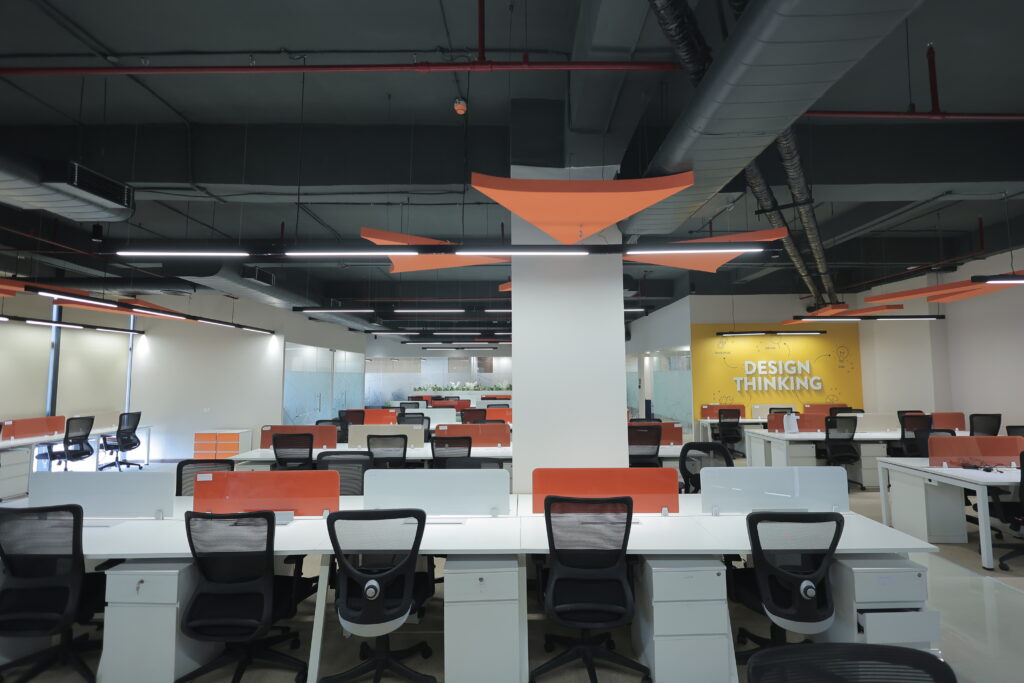
Use furniture with built-in power sources and USB ports to reduce dependency on fixed power sockets. Invest in sit/stand desks to promote movement and accommodate team preferences.
Most importantly, modularity supports inclusivity—spaces can be easily reconfigured for accessibility, different team sizes, or changing workflows without any architectural changes.
8. Multi-Use Breakout Spaces
Breakout spaces give employees a chance to reset, think differently, and interact informally. These areas are critical for startups where work-life integration is real and high pressure is constant.
Design multi-functional lounges that serve as cafeterias during lunch, casual meeting areas in the afternoon, and event venues after hours. Use comfortable sofas, café tables, and ambient lighting to create a cozy feel.
Equip these zones with bookshelves, hobby boards, or game consoles to promote mental breaks. Include charging stations, snack bars, coffee machines, and perhaps even music or podcast corners.
Some startups take it further—incorporating yoga zones, nap pods, or gaming areas for downtime that recharges the brain. These informal, stress-free spaces become incubators for ideas and also improve team bonding and retention.
9. Eco-Friendly and Sustainable Design
Sustainability is a strategic advantage for modern startups. It aligns with values of innovation, responsibility, and future-readiness. An eco-friendly office reduces operating costs and attracts environmentally conscious employees and clients.
Start by using LED lighting, energy-efficient HVAC systems, and motion sensors to reduce power consumption. Source furniture made from recycled or reclaimed materials. Use water-saving fixtures in kitchens and restrooms.
Provide recycling stations, compost bins, and no-single-use policies. Encourage green habits by offering branded reusable mugs, water bottles, and tote bags.
Go the extra mile with solar panels, green roofs, or rainwater harvesting if space and budget allow. And aim for certifications like LEED (Leadership in Energy and Environmental Design) to solidify your sustainability credentials.
10. Art-Driven and Storytelling Spaces
Art isn’t just decorative—it fuels imagination and emotional connection. In startup environments where creativity is currency, art and storytelling walls elevate motivation, reinforce identity, and shape experience.
Display rotating art exhibits from local or employee artists. Use hallways as “timeline corridors” to tell your startup’s journey visually—include photos, sketches, early MVP screenshots, and milestones.
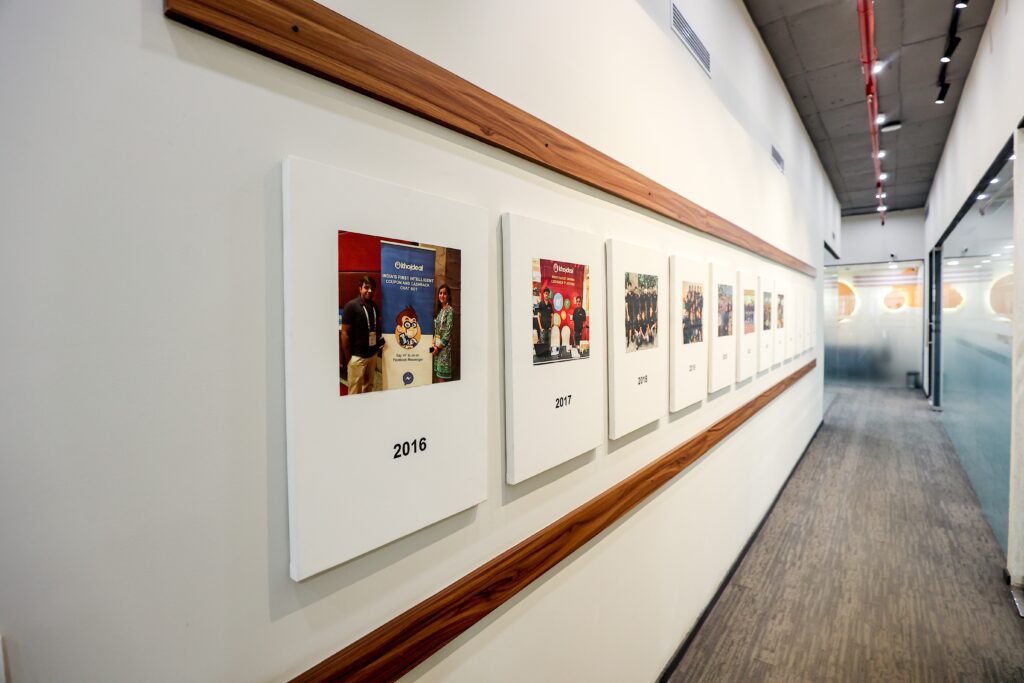
Install interactive murals where employees can leave feedback, ideas, or motivational messages. Design a “Wall of Fame” that celebrates team members, big wins, and community impact.
Incorporating storytelling into design transforms your office from a passive space into an active narrative experience that constantly evolves and motivates.
Final Thoughts
A startup office should be adaptive, expressive, tech-smart, and emotionally intelligent. The ideas above blend modern interior design, behavioral science, and practical scalability—perfectly engineered for startups that think big and grow fast. Partnering with an office interior design company in Gurgaon can help bring these ideas to life with expert planning and execution.
From optimizing workspace layouts to incorporating ergonomic furniture and branding elements, a well-designed office fosters creativity, enhances collaboration, and boosts productivity, making it an essential investment for any growing startup.
